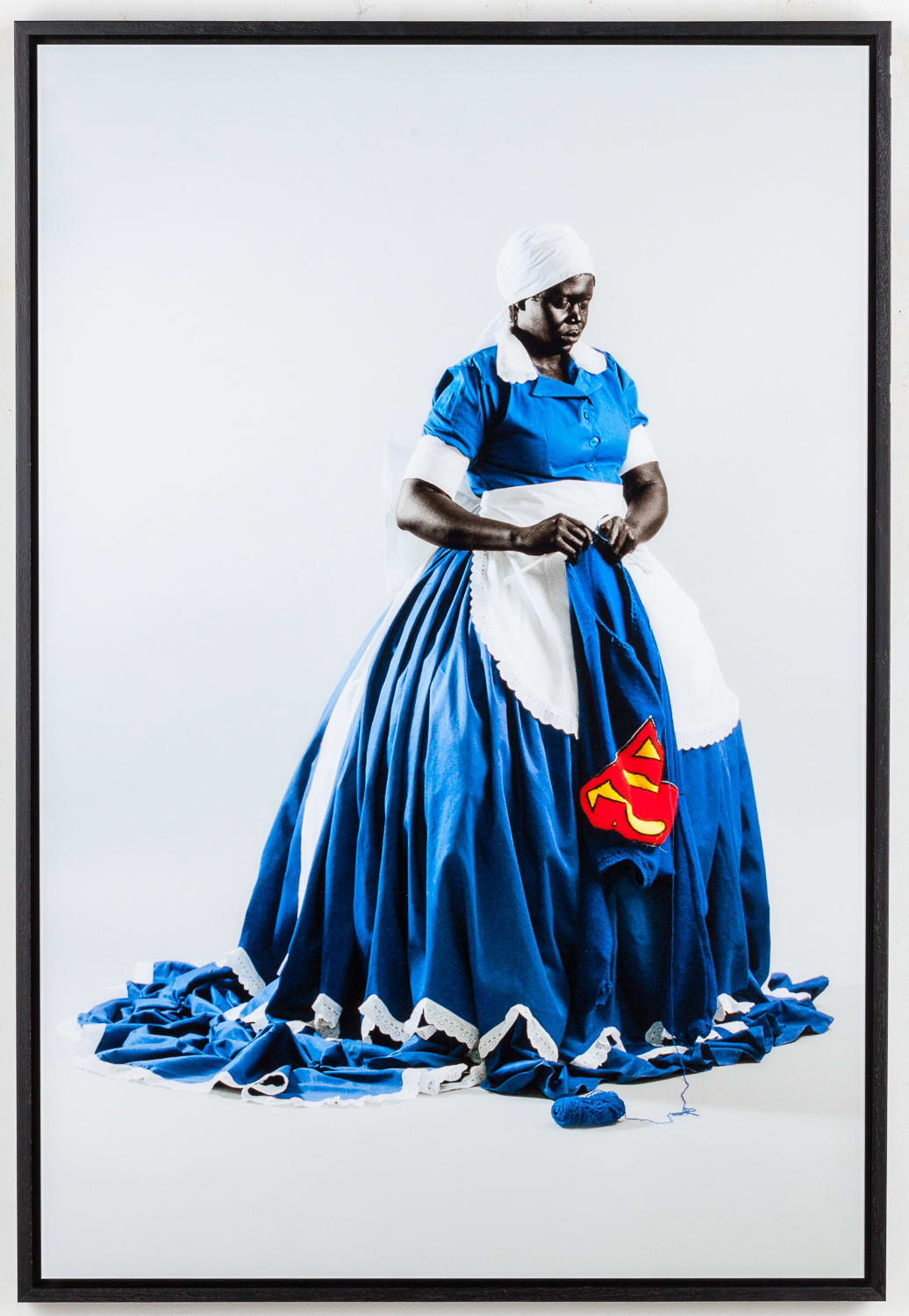-
Mary Sibande South Africa, b. 1982
They Don’t Make Them Like They Used To, 2008Archival Digital Print41 1/8 x 27 3/8 in
104.5 x 69.5 cmEdition of 10 plus 1 artist's proof7435Copyright Mary Sibande, 2008Further images
Here we see Sophie, Mary Sibande's avatar, in her blue phase. Blue and white were the traditional colors of the clothing worn by domestic servants under Apartheid. When Sibande was...Here we see Sophie, Mary Sibande's avatar, in her blue phase. Blue and white were the traditional colors of the clothing worn by domestic servants under Apartheid. When Sibande was a child, her father was not at home, having been conscripted into the South African Army. She was raised by her mother and grandmother. Her mother was a domestic worker. This was one of the only roles available to Black women in South Africa at that time. In this image, the dress is adorned with an upside down Superman symbol, visible right side up by the wearer: a gentle reminder of her inner strength and true power.
Color is fundamental aspect of Sibande's practice. She was born Black in Johannesburg, South Africa, in 1982— part of the majority, yet oppressed by the institutionally white supremacist Apartheid system, which granted minority whites supreme political control. Sibande’s mother was a domestic worker—her uniform a standard, blue dress with white, lace apron and head scarf. Her father, dressed in green fatigues, served in the South African Army. When she was just seven years old, Sibande watched as the police turned water cannons filled with purple dye onto anti-apartheid protestors days before national elections. The purple dye was intended to make protesters easier to arrest, and indeed hundreds were rounded up and jailed, yet protestors commandeered one of the cannons and turned it on the governing party’s legislative offices. After the riot, graffiti around the city foretold, “The purple shall govern.” Six years later, Apartheid would officially end, but still today racial inequity is rampant in South Africa. Sibande expresses the frustration of contemporary Black South Africans with the color red, a choice stemming from the Zulu aphorism, “ie ukwatile uphenduke inja ebomvu,” meaning “he is angry, he turned into a red dog.”
Sibande employs the human form as a vehicle through photography and sculpture as a focused critique on the stereotypical depictions of women, particularly black women in South Africa. The body, for Sibande, and particularly how we clothe it, is the site where this history is contested and where Sibande’s own fantasies can play out. This counter history takes the form of an alter-ego in Sibande’s early work, a persona by the name of ‘Sophie’ who is dressed in various uniforms that resemble the dresses worn by domestic workers. Altering these dress styles into Victorian motifs, Sibande completely reanimates Sophie’s history through how her body is adorned and the way she occupies these narratives that were stolen and denied from her. Transitioning from blue to green to purple to red, Sibande introduces us not only to the many faces of herself and ‘Sophie’, but to the complex person hoods of African Women who continue to create worlds and narratives outside of the canon of Western Imperialism.
Exhibitions
Mary Sibande - Unhand me, Demon!, 2021. Kavi Gupta | Elizabeth St, Chicago, IL;







